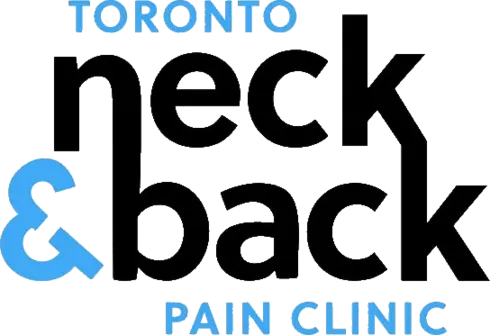Understanding Arthritis and Its Impact on Neck and Back Pain
Living with neck and back pain can be challenging, especially when arthritis is a contributing factor. Arthritis, particularly osteoarthritis, is one of the most common causes of joint pain and stiffness that affects millions of people worldwide. This blog post aims to provide a supportive and comforting guide to understanding arthritis, its role in neck and back pain, and what you can do to manage or prevent it.
What Is Arthritis?
Arthritis is not a single disease but a general term that refers to inflammation of the joints. There are over 100 different types of arthritis, but the most common type associated with neck and back pain is osteoarthritis. Osteoarthritis occurs when the protective cartilage that cushions the ends of the bones wears down over time, leading to pain, stiffness, and reduced mobility.
Osteoarthritis in the Spine
When osteoarthritis affects the spine, it can lead to significant discomfort in the neck (cervical spine) and lower back (lumbar spine). The breakdown of cartilage can cause the bones to rub against each other, triggering inflammation and pain. Over time, the body may attempt to stabilize the joint by forming bone spurs, which can lead to nerve irritation or compression, exacerbating the pain.
The Impact of Arthritis on Quality of Life
Arthritis can profoundly impact a person’s quality of life. The chronic pain and stiffness associated with the condition can limit physical activity, disrupt sleep, and even contribute to emotional challenges such as anxiety or depression. Research highlights the following impacts:
- Mobility Challenges: Arthritis in the neck or back can make it difficult to perform everyday activities such as bending, twisting, or lifting.
- Emotional Well-being: Chronic pain is closely linked to increased levels of stress, anxiety, and depression. Arthritis patients often report feelings of frustration and helplessness.
- Sleep Disturbance: Pain and discomfort can make it hard to find a comfortable sleeping position, leading to poor sleep quality.
- Work Productivity: Persistent pain can affect one’s ability to focus and complete tasks efficiently, leading to reduced productivity.
Studies in medical literature confirm that arthritis-related pain and reduced mobility significantly impact both physical and mental health, emphasizing the need for effective management and treatment strategies.

Joints can succumb to wear and tear causing arthritis and related pains.
Treatment Options for Arthritis-Related Neck and Back Pain
Fortunately, there are various treatments available to help manage neck and back pain caused by arthritis. These range from conservative approaches to more advanced interventions. Below are some examples:
Chiropractic Care
Chiropractic adjustments can help improve joint mobility, reduce inflammation, and alleviate pain caused by arthritis. Chiropractors are trained to identify and treat joint dysfunctions that contribute to stiffness and discomfort in the spine. Research supports the effectiveness of chiropractic care in reducing pain and improving function in patients with osteoarthritis-related neck and back issues.
Physical Therapy
Physical therapy focuses on strengthening the muscles that support the spine, improving flexibility, and enhancing posture. Tailored exercise programs can reduce strain on arthritic joints and improve overall spinal health.
Medications
Over-the-counter pain relievers such as acetaminophen or nonsteroidal anti-inflammatory drugs (NSAIDs) can help manage mild to moderate arthritis pain. In more severe cases, a doctor may prescribe stronger medications or corticosteroid injections to reduce inflammation.
Heat and Cold Therapy
Applying heat to stiff joints can improve blood flow and relax tight muscles, while cold therapy can reduce inflammation and numb acute pain. These methods are simple yet effective ways to manage arthritis symptoms at home.
Massage Therapy
Therapeutic massage can help reduce muscle tension, improve circulation, and promote relaxation. When performed by a trained professional, massage therapy can be an excellent complement to other treatments for arthritis-related pain.
Lifestyle Changes
Adopting an anti-inflammatory diet rich in fruits, vegetables, whole grains, and omega-3 fatty acids can help reduce systemic inflammation. Regular low-impact exercises, such as swimming or walking, can also maintain joint health and prevent stiffness.
Arthritis in Other Joints: Knees, Hips, and Shoulders
While the neck and lower back are common areas affected by arthritis, the condition can also impact other major joints such as the knees, hips, and shoulders. Here are some insights into managing arthritis in these areas:
Knees
Arthritis in the knees often leads to difficulty walking, climbing stairs, or even standing for long periods. Treatments include knee braces, physical therapy, and in severe cases, joint replacement surgery. Exercise programs focusing on strengthening the quadriceps can help stabilize the knee joint and reduce pain.
Hips
Hip arthritis can cause pain that radiates to the groin, thigh, or buttocks. Treatments may include stretching exercises, weight management to reduce joint stress, and corticosteroid injections for pain relief. Chiropractic adjustments can also improve alignment and reduce strain on the hips.
Shoulders
Shoulder arthritis often results in limited range of motion and discomfort during overhead activities. Physical therapy, along with anti-inflammatory treatments, can help restore function and reduce pain.
(Looking for more articles on joint pain? Visit our sister blog and check out the section dedicated to joint pain.)
Tips for Preventing Arthritis, Especially in the Neck and Lower Back
While arthritis cannot always be prevented, there are several steps you can take to reduce your risk and protect your joints, particularly in the neck and lower back:
1. Maintain a Healthy Weight
Excess weight puts additional stress on your joints, especially those in the lower back and knees. Maintaining a healthy weight can reduce wear and tear on these critical areas.
2. Stay Active
Regular physical activity helps maintain joint flexibility and strengthens the muscles that support your joints. Focus on low-impact exercises such as swimming, cycling, or yoga to minimize joint stress. (See this blog article on our website for some tips on how to feel less stiff and achy in the morning.)
3. Practice Good Posture
Poor posture can increase the strain on your spine, leading to premature wear and tear. Be mindful of your posture when sitting, standing, or working at a desk.
4. Avoid Repetitive Movements
Repetitive motions can accelerate joint wear and tear. If your job or hobbies involve repetitive activities, take regular breaks and use ergonomic tools to reduce joint stress.
5. Eat a Nutrient-Rich Diet
A balanced diet rich in vitamins C, D, and E, as well as omega-3 fatty acids, can help protect your joints. Foods like salmon, spinach, nuts, and berries are excellent choices.
6. Stay Hydrated
Proper hydration helps maintain the elasticity and lubrication of joint cartilage, reducing the risk of arthritis-related damage.
7. Get Regular Chiropractic Check-Ups
Routine chiropractic care can help maintain spinal alignment, improve joint function, and reduce the risk of developing arthritis-related complications in the neck and back.
If you’re dealing with arthritis-related neck or back pain, contact us today to book a consultation and take the first step toward relief!
Conclusion
Arthritis is a significant contributing factor to neck and back pain, but understanding the condition and its effects can empower you to take proactive steps toward relief and prevention. By exploring a range of treatments—from chiropractic care to lifestyle changes—you can improve your quality of life and manage arthritis-related pain more effectively.
Prevention is equally important. Maintaining a healthy lifestyle, practicing good posture, and staying active can go a long way in protecting your joints from arthritis. If you’re struggling with neck or back pain, consulting a chiropractor can be a crucial step in finding relief and improving your overall well-being.
Remember, you don’t have to navigate arthritis alone. Reach out to your healthcare provider or chiropractor to create a personalized plan that works for you. Relief is possible, and a more comfortable, active life is within your reach.






